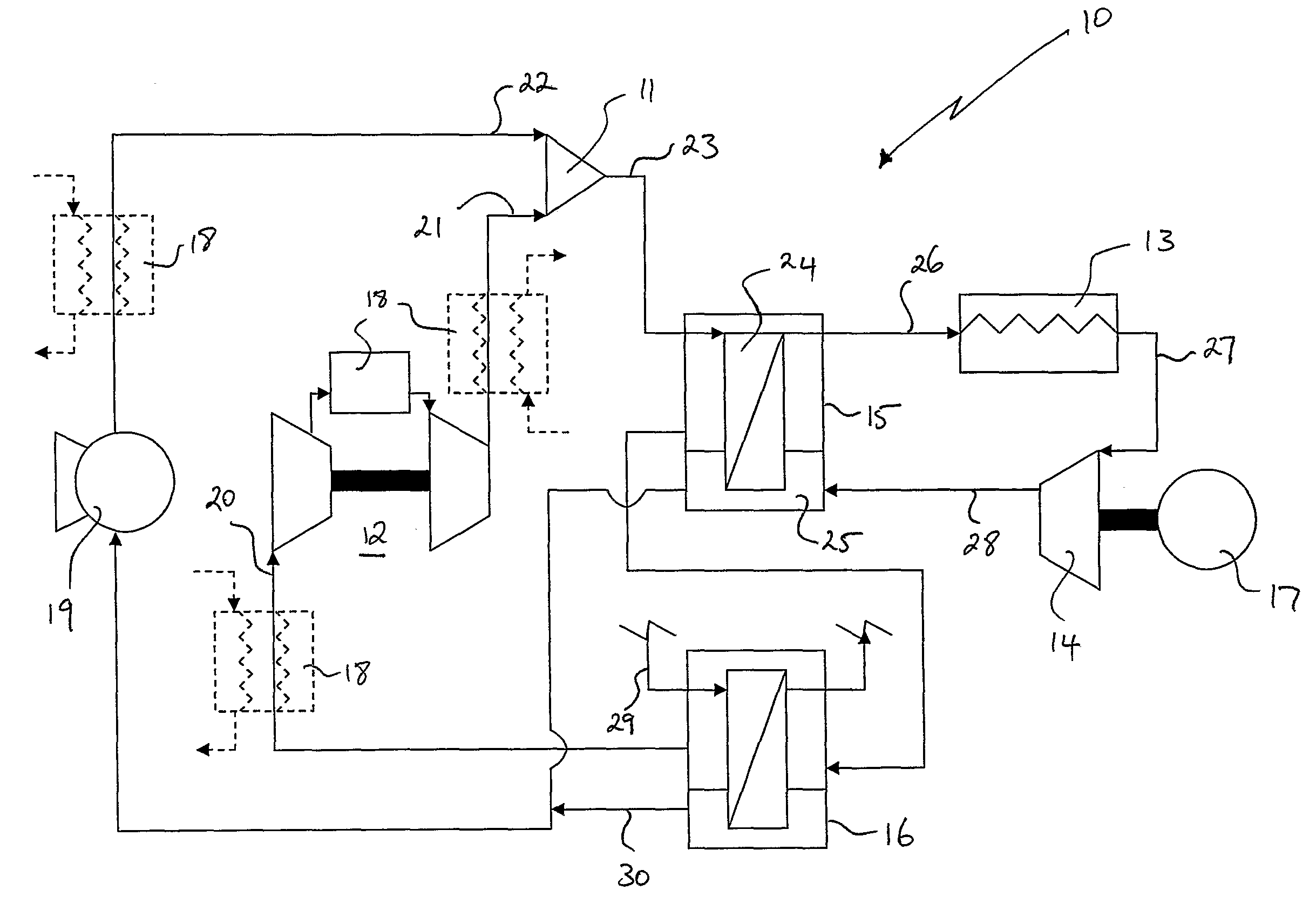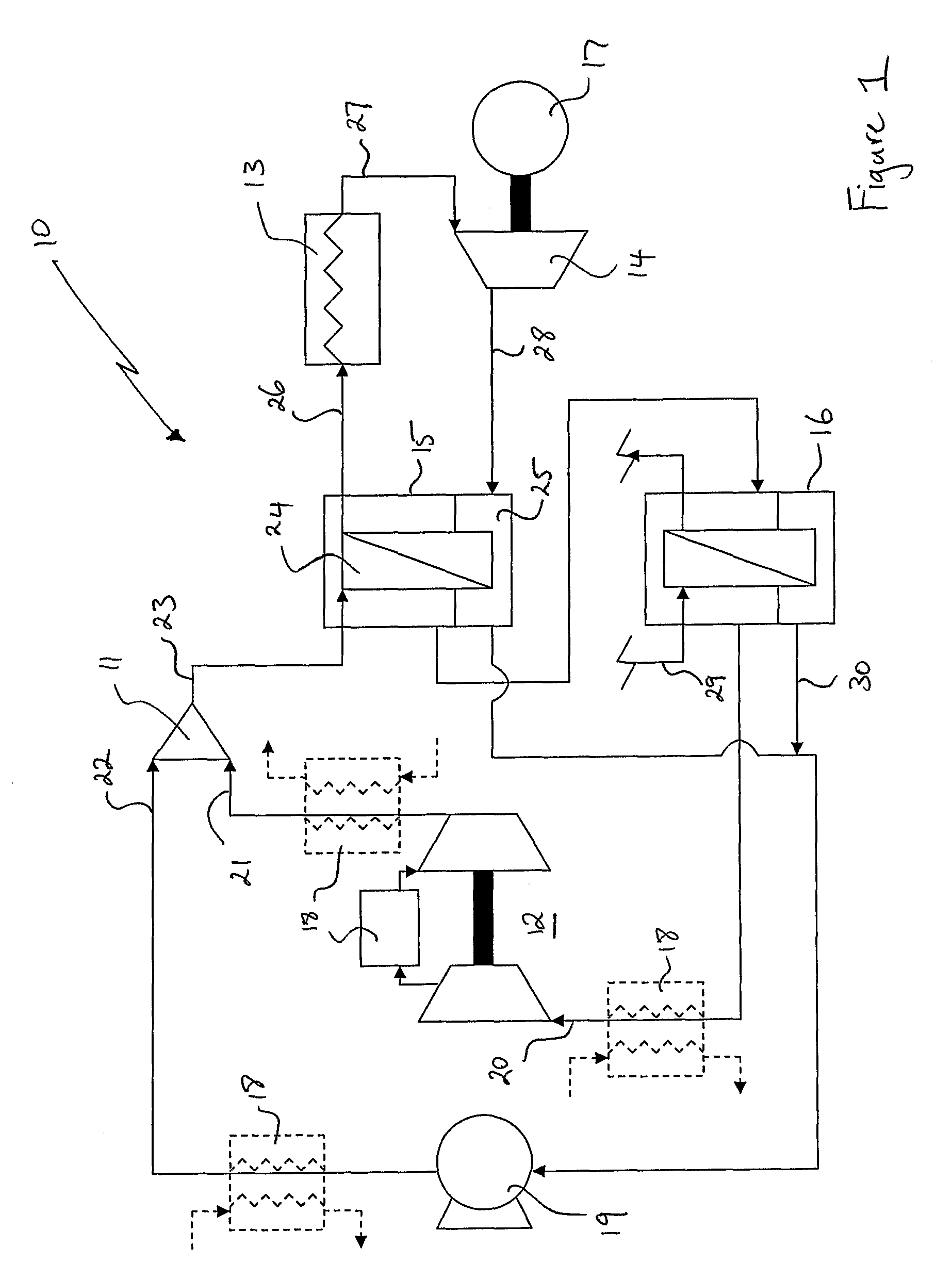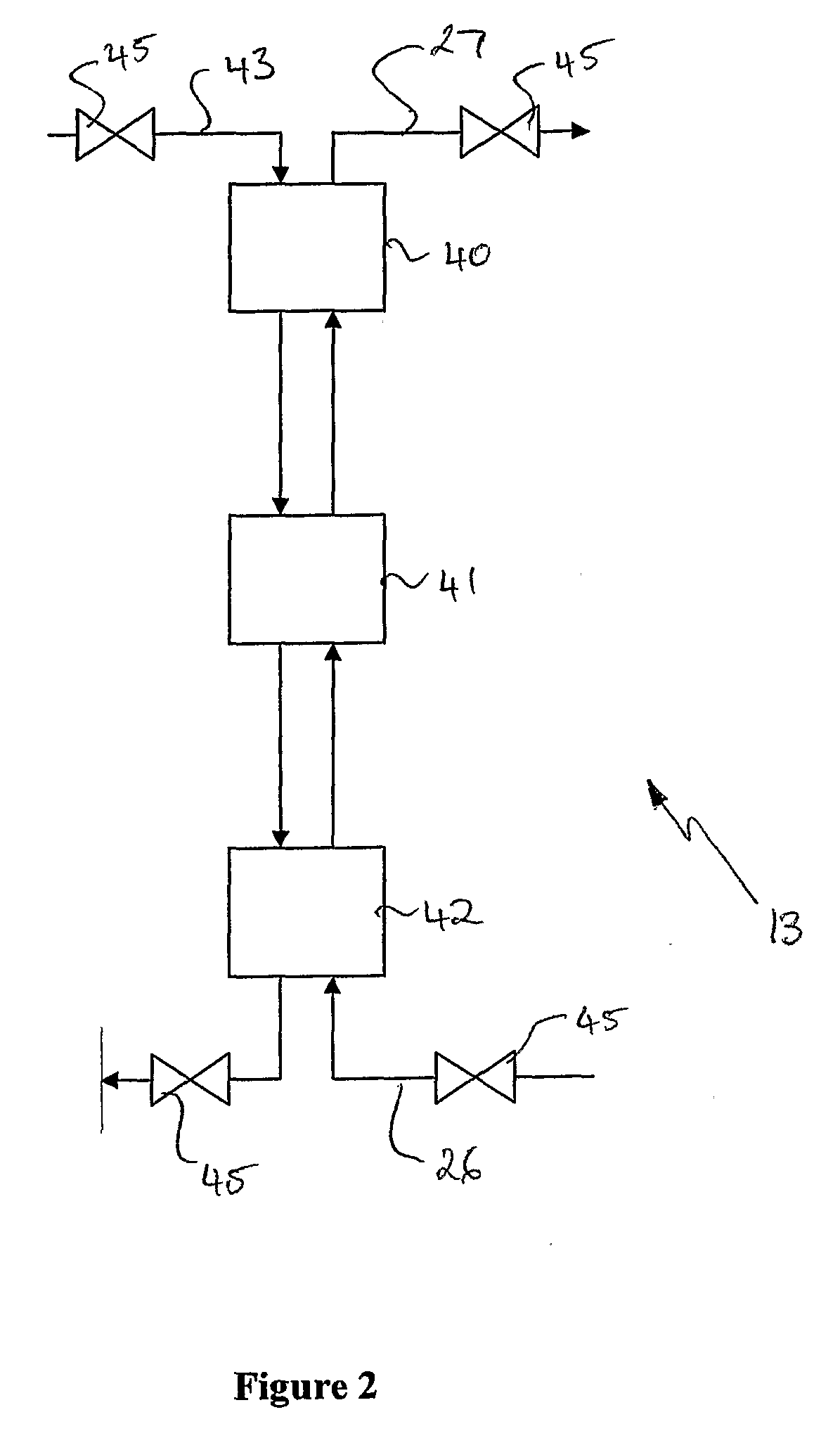Heat Engine System
a technology of heat engine and heat pump, which is applied in the direction of machines/engines, indirect heat exchangers, lighting and heating apparatus, etc., can solve the problems of reducing the efficiency of the heat engine, not being able to operate the heat engine according to the ideal carnot, and being unsatisfactory, so as to reduce the melting temperature of the volume of material
- Summary
- Abstract
- Description
- Claims
- Application Information
AI Technical Summary
Benefits of technology
Problems solved by technology
Method used
Image
Examples
example
[0205]A model of a heat engine system according to embodiments of the present invention was constructed in HYSYS®. FIG. 3 provides a schematic view of the model. The model was prepared on the basis of an approximately 1:1 mass flow ratio of nitrogen as the first component and water as the second component. Other parameters assumed for the model include:[0206]an ambient temperature of 35° C. (for Queensland ambient temperature conditions)[0207]compression ratio for the compressor of 6.2:1[0208]Compressor efficiency of 85%[0209]Expander efficiency of 85%[0210]Pressure drops of 5 kPa for the apparatus, 30 kPa for the boiling side of the recuperator, 20 kPa for the heater, 300 Pa for the condensing side of the recuperator.[0211]Exit temperature for the recuperator condensing side of 60° C.
[0212]Table 1 below sets out the conditions at points A-I in the system as indicated on FIG. 3.
TABLE 1AB(Nitrogen)(Water)CDEFGHITemperature35.0035.00273.545.91617.61100742.960.0035.00(° C.)Pressure100....
PUM
 Login to View More
Login to View More Abstract
Description
Claims
Application Information
 Login to View More
Login to View More - R&D
- Intellectual Property
- Life Sciences
- Materials
- Tech Scout
- Unparalleled Data Quality
- Higher Quality Content
- 60% Fewer Hallucinations
Browse by: Latest US Patents, China's latest patents, Technical Efficacy Thesaurus, Application Domain, Technology Topic, Popular Technical Reports.
© 2025 PatSnap. All rights reserved.Legal|Privacy policy|Modern Slavery Act Transparency Statement|Sitemap|About US| Contact US: help@patsnap.com



